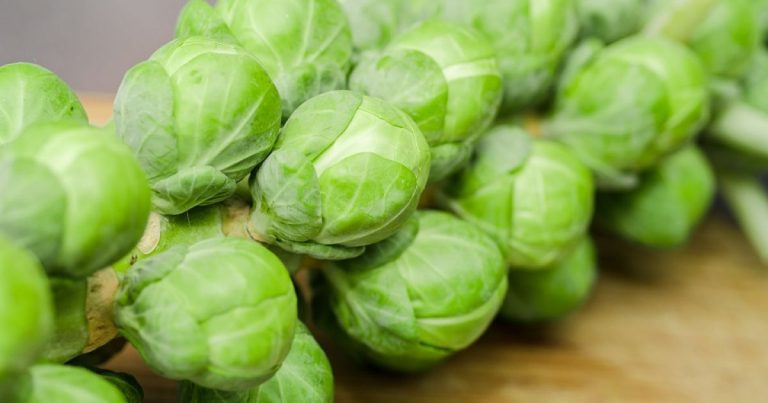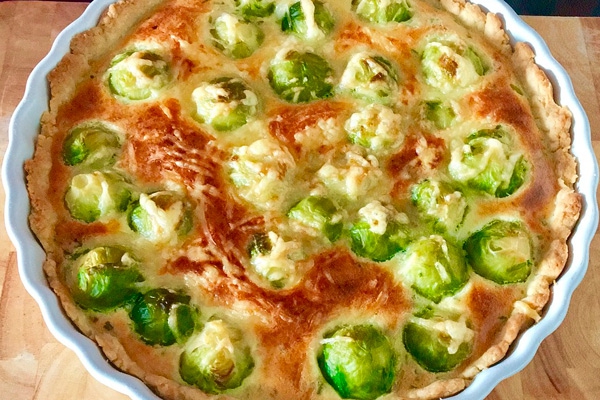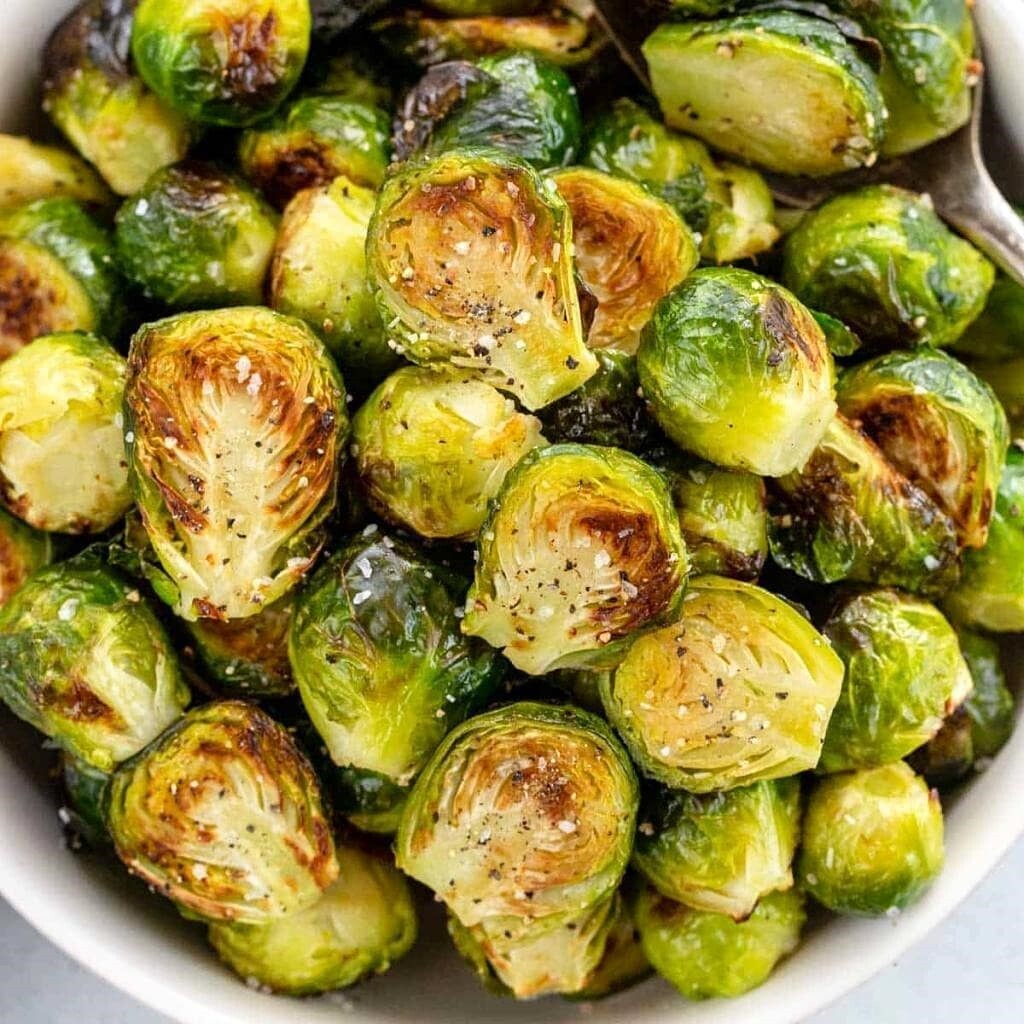Roasting Brussels sprouts is easy with these instructions. Roasted Brussels sprouts are a popular side dish in wintry temperatures. Three variants bring variety to the plate.
You can prepare Brussels sprouts in different ways – for example in a pan. We’ll show you three varied ways of roasting Brussels sprouts.
Brussels sprouts are a typical winter vegetable from the cabbage family. Harvest time in Germany begins at the end of September. Brussels sprouts are in high season between November and December. Since cabbage can be stored very well, you can buy regional Brussels sprouts until March.
The best way to buy fresh Brussels sprouts is organic and from regional suppliers. Because organic food usually contains far less pesticide residues – synthetic pesticides are forbidden in organic cultivation. In addition, Brussels sprouts from the region do not have to be transported so far, which saves CO2. An alternative to the shop or market around the corner is the delivery of an eco box** with regional fruit and vegetables directly to your home.
Roast Brussels sprouts: the ingredients

You need the following ingredients for four to six side dishes of roasted Brussels sprouts:
500 grams of Brussels sprouts
3-4 tbsp vegetable oil (e.g. olive oil)
Salt
pepper
1/2 tsp ground cumin
Be sure to use fresh Brussels sprouts for this recipe. Frozen cabbage florets cannot be fried until brown because they lose too much water.
Tip: The ground cumin will help you digest the cabbage better.
Roast Brussels sprouts properly
If you want to roast Brussels sprouts, you should be careful not to burn them. How to properly roast Brussels sprouts:
Clean the Brussels sprouts carefully.
Cut the cabbage florets in half.
Heat the olive oil in a pan on high.
Add the Brussels sprouts once the oil is hot.
Then reduce the heat and fry the halves of Brussels sprouts for about five minutes on medium-high. Stir constantly so the vegetables don’t burn.
Add the salt, pepper and ground cumin and mix the spices with the Brussels sprouts. Reduce the temperature to the lowest level and cover the pan with a lid.
Roast the Brussels sprouts for an additional 15 to 20 minutes, depending on how al dente you want them to be. Stir every 3 to 5 minutes to avoid burning the Brussels sprouts. Add 1-2 tablespoons of water if the veggies are too dry and sticking. Alternatively, you can also increase the amount of oil in this case.
Roast Brussels sprouts: three delicious variants

Roasted Brussels sprouts don’t have to taste boring: With a few simple steps and little effort, you can change the winter vegetables and add variety to your plate.
Brussels sprouts go very well with nuts. For example, add some roasted peanuts or cashew nuts to the finished dish.
With leftover rice from the day before, you can turn the fried Brussels sprouts into a delicious rice pan. Mix the cold rice with the fried florets and heat the rice pan for five more minutes. As a spice, curry goes very well here.
If you’re roasting Brussels sprouts, you can use breadcrumbs to give them a crispy crust. Simply add some oil or butter along with 2-3 tablespoons of breadcrumbs to the already cooked Brussels sprouts and sear them again.
Roast Brussels sprouts in the oven: Put the Brussels sprouts halves in a casserole dish and mix the vegetables with the spices. Pour some oil over it and put the mold in the oven. Then roast the Brussels sprouts for 45 to 50 minutes at 200 degrees Celsius top and bottom heat.
Brussels sprouts can also be combined with other types of vegetables to create a vegetable pan. But pay attention to the different cooking times of the vegetables.





